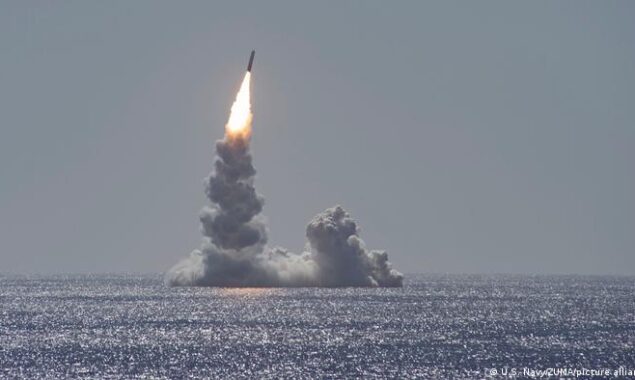
The Russian invasion of Ukraine has sparked popular concern about the use of nuclear weapons in Europe or against the US. This degree of fear has not been witnessed since the Cold War’s conclusion.
Russian President Vladimir Putin’s implicit threats to use nuclear weapons against “anyone interferes with us” in Ukraine, as well as his placing of more nuclear officers on shifts under a “special regime of combat duty,” have surprised NATO members.
Russia and the United States each have thousands of nuclear weapons, the majority of which are five or more times more powerful than the atomic bombs that destroyed Hiroshima and Nagasaki in 1945. There are over 1,600 weapons on standby on each side, capable of reaching targets all across the world.
Those figures are close to the limitations permissible by the 2011 New Strategic Weapons Reduction Deal, colloquially known as “New START,” which is the only nuclear arms control treaty presently in force between Russia and the United States.
Intercontinental ballistic missiles, or ICBMs, submarine-launched ballistic missiles, and missiles fired from specialised aircraft are also part of their arsenals. Many of these missiles may be outfitted with numerous nuclear warheads that can strike various targets at the same time.
The pact contains ways for both parties to monitor and verify compliance with the limitations on warheads and missiles in order to guarantee that countries adhere to the restrictions on warheads and missiles. By 2018, both Russia and the United States had fulfilled their responsibilities under the New START treaty, and the deal was extended for five years in early 2021.
Both countries’ nuclear arsenals also contain hundreds of shorter-range nuclear missiles that are not covered by any treaty. According to the most commonly acknowledged nongovernmental estimates, Russia currently possesses about 2,000 of them, roughly ten times as many as the United States.
Half of the approximately 200 US shorter-range weapons are said to be placed in five NATO nations in Europe: Belgium, Germany, Italy, the Netherlands, and Turkey — but the US does neither confirm or deny their placements. During the war, allied planes would take off from certain places and fly to their objectives before dropping bombs.
France and the United Kingdom, two other NATO members, also have nuclear arsenals. They each have hundreds of nuclear weapons, significantly less than the nuclear superpowers.
France has both submarine-launched and airplane-launched nuclear cruise missiles, whereas the United Kingdom exclusively has submarine-launched nuclear weapons. Both nations have made public the quantity and composition of their arsenals, but none is or has been a party to US-Russian arms limitation treaties.
The United States, the United Kingdom, and France safeguard other NATO members by their “nuclear umbrellas,” in accordance with NATO’s vow that an attack on any ally is considered an attack on the whole alliance.
China’s nuclear arsenal is presently comparable in size to that of the United Kingdom and France. However, it is fast expanding, and some US officials are concerned that China is pursuing parity with the US. China, France, and the United Kingdom are not party to any weapons control accords.
Each of India, Pakistan, and Israel possesses hundreds of nuclear weapons. None of them have signed the Treaty on the Non-Proliferation of Nuclear Weapons, in which signatories agree to confine nuclear weapon ownership to the five permanent members of the United Nations Security Council, all of whom owned nuclear weapons prior to the Treaty’s signing.
North Korea, which likewise possesses a large number of nuclear weapons, signed the deal in 1985 but withdrew in 2003. North Korea has routinely tested nuclear bombs as well as missiles capable of carrying them.
There were nuclear weapons in other sites as well. The republics that became Belarus, Ukraine, and Kazakhstan possessed former Soviet nuclear weapons on their territory when the Soviet Union disintegrated in 1991. All three nations handed up their weapons to Russia in exchange for international assurances of their safety.
Fortunately, none of these weapons have been utilised in combat since the United States bombed Hiroshima and Nagasaki in 1945. However, as recent events have shown, the potential of their use remains a terrifying prospect.
Read More News On
Catch all the International News, Breaking News Event and Latest News Updates on The BOL News
Download The BOL News App to get the Daily News Update & Follow us on Google News.




